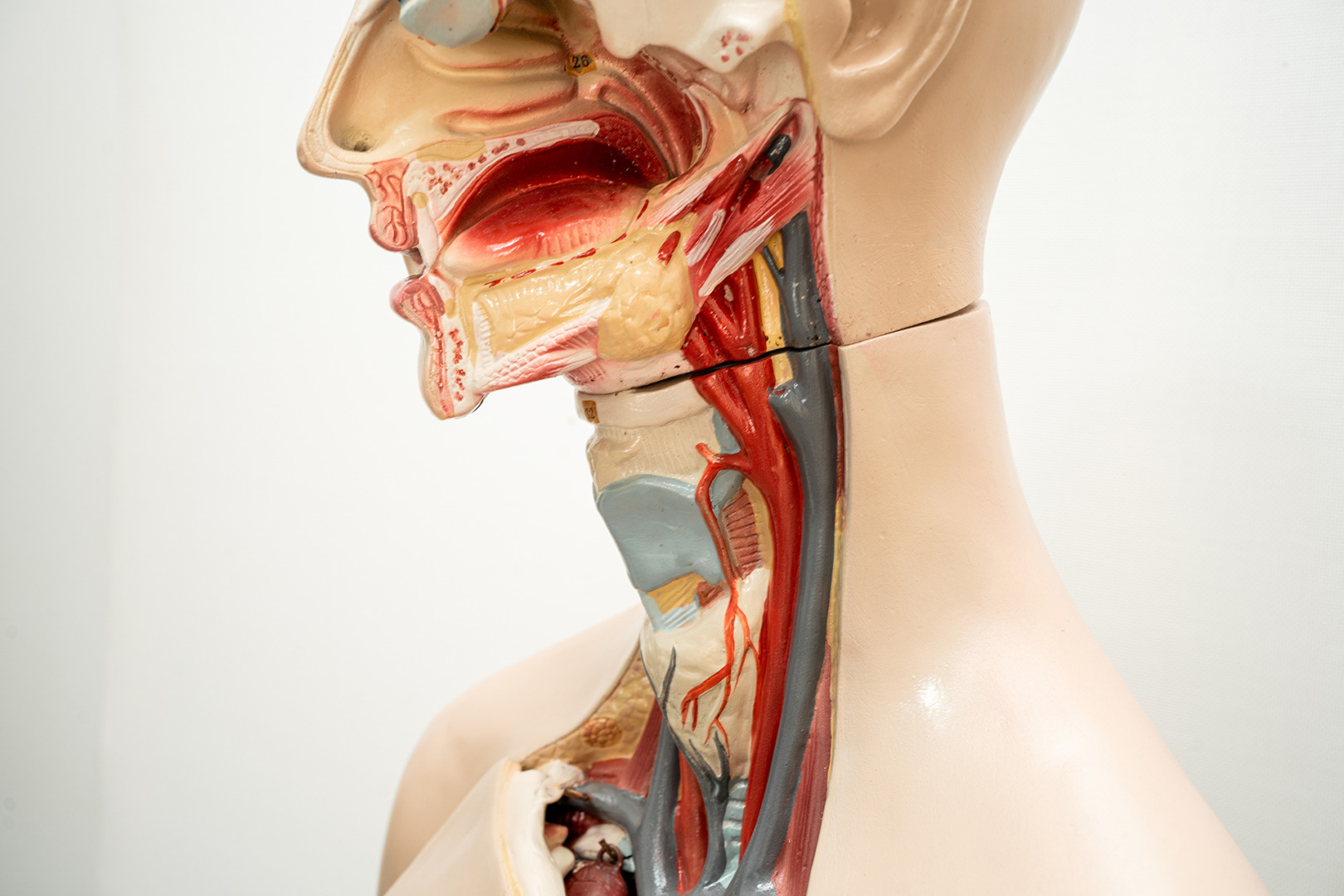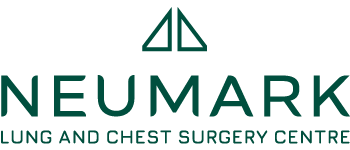Oesophageal cancer is a form of cancer characterised by abnormal cell growth in the oesophagus. This serious condition causes swallowing difficulties and weight loss.
Diagnosing oesophageal cancer involves a combination of medical history reviews, imaging tests and endoscopic procedures for staging and treatment planning. Optimal treatment options include surgery, chemotherapy and radiation therapy. Importantly, early detection improves prognosis and survival rates for those diagnosed with oesophageal cancer.
About Oesophageal Cancer
Oesophageal cancer is a disease where cells grow abnormally in the oesophagus, the muscular tube that connects the throat to the stomach. The cancer starts in the cells that line the inner mucosal layer of the oesophagus and can occur anywhere along its length. This cancer most commonly occurs in the lower part of the oesophagus, just above the stomach.
The mutations in the DNA of these cells cause them to grow and divide faster than usual, forming a tumour. This disrupts the normal function of the oesophagus, causes difficulty swallowing and other symptoms, and spreads to other parts of the body.
Oesophageal Cancer Symptoms
Difficulty in swallowing or dysphagia is the hallmark symptom of oesophageal cancer. As the tumour grows, it narrows the oesophagus and causes swallowing difficulties and pain. For some, this pain becomes severe.
Unexpected weight loss is also a common side-effect of oesophageal cancer due to eating difficulties and loss of appetite. Before difficulty in swallowing, some people experience chronic heartburn or acid reflux, which should be addressed. Other symptoms are persistent coughing, chest pain, pressure or a burning sensation. You should see a doctor if you have any of these chronic symptoms.
Early detection can improve treatment outcomes and oesophageal cancer survival rates. Immediate consultation is necessary if food feels stuck in your oesophagus or you have persistent vomiting, chest pain or indigestion.

Types of Oesophageal Cancer
There are two main types of oesophageal cancer: adenocarcinoma and squamous cell carcinoma. The former, adenocarcinoma, arises from the glandular cells in the lining of the oesophagus. This type of cancer is common among caucasian populations and accounts for around 80% of all oesophagal cancers in the U.S.
Squamous cell carcinoma, on the other hand, develops from the squamous cells that line the oesophagus. This type of cancer is common among Black and Asian people and is higher in certain regions of the world, such as Asia, compared to adenocarcinoma.
Oesophageal Cancer Causes and Risk Factors
Oesophageal cancer has multiple causes, including a combination of lifestyle and medical conditions. The more common risk factors are:
- Smoking accounts for around 35% of oesophageal cancer patients in some countries.
- Excessive alcohol consumption increases the risk, especially for squamous cell oesophageal cancer.
- Being overweight or obese accounts for more than 25% of oesophageal cancer cases in some countries.
- Oesophageal cancer affects men more than women.
Chronic acid reflux or gastroesophageal reflux disease (GORD) is a risk factor for oesophageal adenocarcinoma. Individuals with Barrett’s oesophagus, a condition where the oesophagal lining changes due to acid exposure, have a small risk of developing oesophageal adenocarcinoma. Having achalasia, a rare condition where the oesophagus has trouble moving food into the stomach, can increase the risk of oesophageal cancer.
Long-term radiotherapy for other cancers can also slightly increase the risk of oesophageal cancer. Knowing these risk factors helps take preventive measures and seek medical help when necessary.

Oesophageal Cancer Diagnosis
Diagnosing oesophageal cancer begins with a thorough medical history review and physical examination to assess symptoms, risk factors, and overall health. The primary method for diagnosing oesophageal cancer is upper endoscopy (esophagogastroduodenoscopy) or EGD. This procedure involves inserting a thin, flexible tube with a camera through the mouth to visualise the oesophageal lining directly. A biopsy — a small tissue sample collected during the endoscopy — is essential for confirming cancer.
Imaging tests such as CT scans and MRIs are commonly used to determine the extent of the disease and whether it has spread to nearby organs or lymph nodes. In some cases, PET-CT scans detect distant metastases, providing a more comprehensive overview of cancer progression.
A barium swallow test, where the patient drinks a contrast solution before undergoing X-rays, can help detect structural abnormalities in the oesophagus, such as narrowing, masses, or irregularities in the lining. However, while useful as an initial screening tool, it cannot confirm a cancer diagnosis and is typically followed by more definitive testing.
Endoscopic ultrasound (EUS) is critical for staging and assessing how deeply the tumour has invaded the oesophageal wall and whether nearby lymph nodes are affected. Using high-frequency sound waves, EUS provides detailed images of the oesophagus and surrounding structures, making it invaluable for determining the most effective treatment plan.
By combining these diagnostic tools, doctors can accurately classify oesophageal cancer, guide treatment decisions, and improve patient outcomes through timely intervention.

Staging and Grading Oesophageal Cancer
Staging and grading are important steps in understanding the extent of oesophageal cancer and determining the best treatment approach.
The staging process evaluates the depth of tumour invasion (T-stage), the number of involved lymph nodes (N-stage) and the presence of distant metastasis (M-stage). Some patients may require staging laparoscopy or thoracoscopy to determine the degree of cancer spread.
Conversely, grading indicates how similar the cancer cells are to normal cells, which determines their growth and spread rates. Lower-grade cancers are more similar to normal cells and grow and spread more slowly; higher-grade cancers are more abnormal and aggressive. Knowing the cancer stage and grade is important in planning the treatment.
Oesophageal Cancer Treatment
Oesophageal cancer treatment can involve any combination of surgery, chemotherapy, radiation therapy and targeted therapy. The information gathered from staging will be a significant factor in deciding the treatment plan, since it shows the extent of the cancer. Early-stage cancers such as Stage 0, I and II are usually resectable, meaning they can be surgically removed.
For advanced oesophageal cancer, treatment options include chemotherapy, radiation therapy and immunotherapy. These treatments aim to shrink the tumour, kill cancer cells and improve chances of surgery. The classification of cancers into clinical, pathological and post-neoadjuvant stages helps tailor the treatment to the patient’s needs.
Oesophageal cancer treatment is multi-faceted and requires a holistic approach to get the best results. Early detection and prompt intervention can significantly improve most patients’ survival and quality of life.

Esophageal Cancer Surgery
Surgery can be very effective for small oesophagal cancers. Esophagectomy is the most common surgical procedure. It involves removing the affected part of the oesophagus and some surrounding tissues. Depending on the tumour’s location, this can be done using open surgery and minimally invasive approaches.
Video-Assisted Thoracoscopic Surgery (VATS) and da Vinci robot-assisted surgery are techniques that can offer less trauma, less pain, good results, faster postoperative recovery, and more minor scarring compared to traditional methods. These surgical methods enhance the effectiveness of oesophageal cancer treatment and patient outcomes.
Chemotherapy and Radiation Therapy
Chemotherapy is an essential treatment for cancer treatment that uses drugs to kill cancer cells and shrink tumours. It can be given as a standalone treatment in advanced-stage oesophageal cancer or combined with radiation therapy to shrink tumours before surgery or post-surgery to eliminate the remaining cancer.
Radiation therapy uses high-energy beams to target and destroy cancerous cells. When combined with chemotherapy, the two procedures can improve treatment outcomes and increase the chances of surgery. This combination therapy is often used for curative treatment to eradicate the cancer or reduce its spread significantly.
Prevention of Oesophageal Cancer
No surefire prevention method for oesophageal cancer exists, but following these tips can lower the risk of oesophageal cancer. Avoiding tobacco in all forms is crucial, as smoking is a significant contributor to oesophageal cancer. Limiting alcohol intake is also important, as excessive drinking increases the risk.
Regular physical activity and a healthy weight can lower the risk of oesophageal cancer. A diet rich in fruits and vegetables and fewer red and processed meats also helps. Avoiding very hot beverages can also reduce the risk as these drinks can damage the oesophageal lining.
Prognosis and Survival Rates
The survival rate for oesophageal cancer patients depends on the stage at diagnosis. For Stage 1 oesophageal cancer, 45-60% of patients survive 5 years or more. This drops to 30-40% for stage 2 and further for more advanced stages. For stage 3, 15-25% of patients survive 5 years; for stage 4, only 5% survive beyond 4 years. Overall, 20% of oesophageal cancer patients survive 5 years or more after diagnosis. Survival rates depend on the patient’s overall health, the effectiveness of the treatment plan, and the cancer’s response to treatment.

Contact Neumark Surgery and Patient-Centric Care
Neumark Lung & Chest Surgery Centre puts patient-centric care at the forefront, where every patient is involved in and informed on treatment decisions. Neumark is led by Dr Harish Mithiran, a thoracic surgeon with more than 15 years of experience and expertise in robotic-assisted and uniportal video-assisted thoracic surgeries. Our centre provides advanced and compassionate care for both benign and malignant conditions, including oesophageal cancer.
Neumark Surgery is committed to delivering the best outcomes through a patient-centric approach for those seeking world-class care for lung and chest diseases. Contact us to find out more about our services and how we can help you in your journey.

